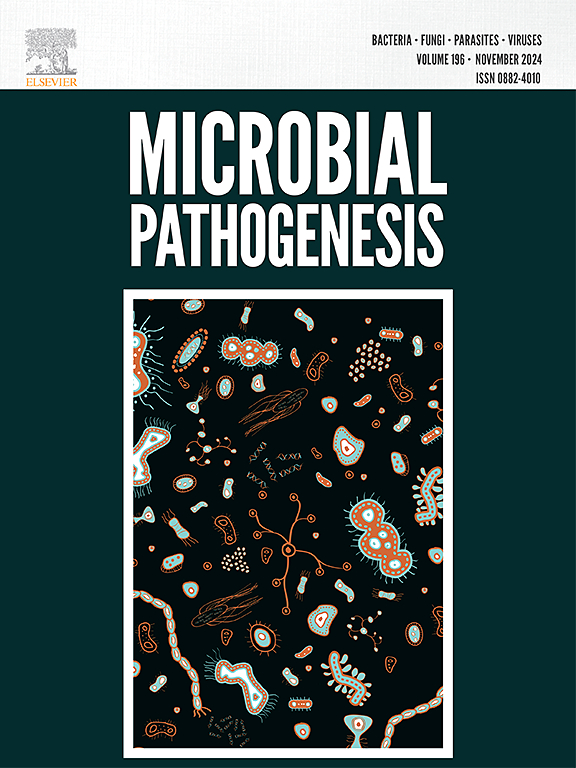表征沙门氏菌感染小鼠巨噬细胞抗感染途径的发热温度依赖性
IF 3.5
3区 医学
Q3 IMMUNOLOGY
引用次数: 0
摘要
发热对主要涉及巨噬细胞的抗感染免疫反应起始阶段的影响尚未得到很好的研究。RAW264.7巨噬细胞接种鼠伤寒沙门氏菌(Salmonella Typhimurium, STm),随后用羧基荧光素琥珀酰氨基酯染色。在各种发热温度下培养后,RNA测序确定了18个温度无关的途径,这些途径在37-40°C时激活,负责细胞死亡、PAMP受体和效应蛋白的合成,以及8个高温依赖的途径,仅在38-40°C时激活,负责内吞作用、细胞杀伤和细胞相互作用。FCM分析表明,当权衡40 - 41°C可能更严重的副作用时,巨噬细胞在38-39°C中获得了相当高的杀菌活性。我们的研究结果为发热控制治疗提供了基本的免疫和代谢途径。本文章由计算机程序翻译,如有差异,请以英文原文为准。
Characterize febrile temperature dependency of anti-infection pathways in Salmonella-infected mouse macrophages
The influence of fever on the initiation phase of anti-infection immune responses, which involve mainly macrophages, has not been well studied. RAW264.7 macrophages were inoculated with Salmonella Typhimurium (STm), which was subsequently stained with carboxyfluorescein succinimidyl ester. Upon culture at various febrile temperatures, RNA sequencing identified 18 temperature-independent pathways that were activated at 37–40 °C and responsible for cell death, PAMP receptors, and the synthesis of effector proteins, as well as eight high temperature-dependent pathways that were activated only at 38–40 °C and responsible for endocytosis, cell killing, and cell interactions. The FCM analysis indicated that when weighed against potentially much more severe side effects from 40 to 41 °C, reasonably high bactericidal activity was achieved at 38–39 °C in macrophages. Our findings provide essential knowledge about fever control treatment in terms of basic immune and metabolic pathways.
求助全文
通过发布文献求助,成功后即可免费获取论文全文。
去求助
来源期刊

Microbial pathogenesis
医学-免疫学
CiteScore
7.40
自引率
2.60%
发文量
472
审稿时长
56 days
期刊介绍:
Microbial Pathogenesis publishes original contributions and reviews about the molecular and cellular mechanisms of infectious diseases. It covers microbiology, host-pathogen interaction and immunology related to infectious agents, including bacteria, fungi, viruses and protozoa. It also accepts papers in the field of clinical microbiology, with the exception of case reports.
Research Areas Include:
-Pathogenesis
-Virulence factors
-Host susceptibility or resistance
-Immune mechanisms
-Identification, cloning and sequencing of relevant genes
-Genetic studies
-Viruses, prokaryotic organisms and protozoa
-Microbiota
-Systems biology related to infectious diseases
-Targets for vaccine design (pre-clinical studies)
 求助内容:
求助内容: 应助结果提醒方式:
应助结果提醒方式:


